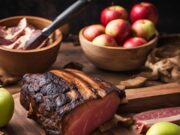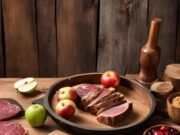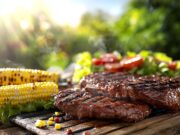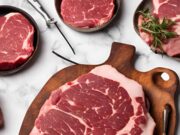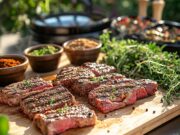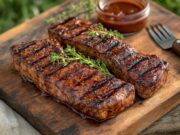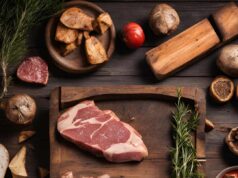Grilling seafood is one of the most rewarding culinary experiences, providing a unique flavor that can enhance any meal.
This guide presents essential tips and techniques to help you master the art of grilling, covering everything from selecting the best types of seafood to perfecting your grilling methods. You will learn how to choose fresh fish and shellfish, marinate for maximum flavor, and achieve that ideal char.
Whether you are a novice or a seasoned grill master, these insights will ensure that your seafood dishes stand out at your next cookout.
Key Takeaways:
- Choose the freshest seafood for grilling to ensure the best flavor and texture.
- Preheat the grill and cook seafood for the appropriate amount of time to achieve perfect doneness.
- Marinating and seasoning seafood before grilling enhances its flavor and prevents it from sticking to the grill.
Top Tips for Grilling Seafood: From Preparation to Perfection
Grilling seafood can be an exhilarating culinary experience that transforms fresh fish, shrimp, and other marine delights into mouthwatering dishes. By selecting high-quality ingredients and mastering the art of seasoning along with appropriate grilling techniques, you can achieve perfection in grilling seafood—a skill that requires both knowledge and practice.
This guide will provide you with essential tips covering every aspect of the grilling process, ensuring that each meal not only tastes exceptional but also retains the freshness and smoky tones that grilling imparts. With the right preparation, you can elevate your cooking game and impress your guests with delicious seafood that highlights the best flavors of the ocean.
The Joy of Grilling Seafood
Grilling seafood enhances your cooking experience by offering vibrant flavors and a sense of culinary adventure. Cooking fresh fish, shrimp, and other seafood on a grill not only elevates their taste but also introduces a smoky flavor that enriches any meal. The simplicity of using quality ingredients such as olive oil, butter, and fresh herbs allows for a quick and enjoyable grilling process, making it accessible for both novice and experienced chefs.
This technique preserves the natural flavors of seafood while creating a delightful outdoor dining experience, perfect for summer gatherings and special occasions.
The tantalizing aroma that fills the air as seafood sizzles on the grill serves as an invitation to indulge. Picture the succulent charred exterior of freshly caught salmon, its rich, buttery flavor complemented by a zesty lemon and herb marinade. Alternatively, skewered shrimp brushed with a garlicky spice mix can elevate a simple meal into an extraordinary feast.
Each grilling method, whether direct grilling or using a cedar plank, imparts its own unique characteristics to the seafood.
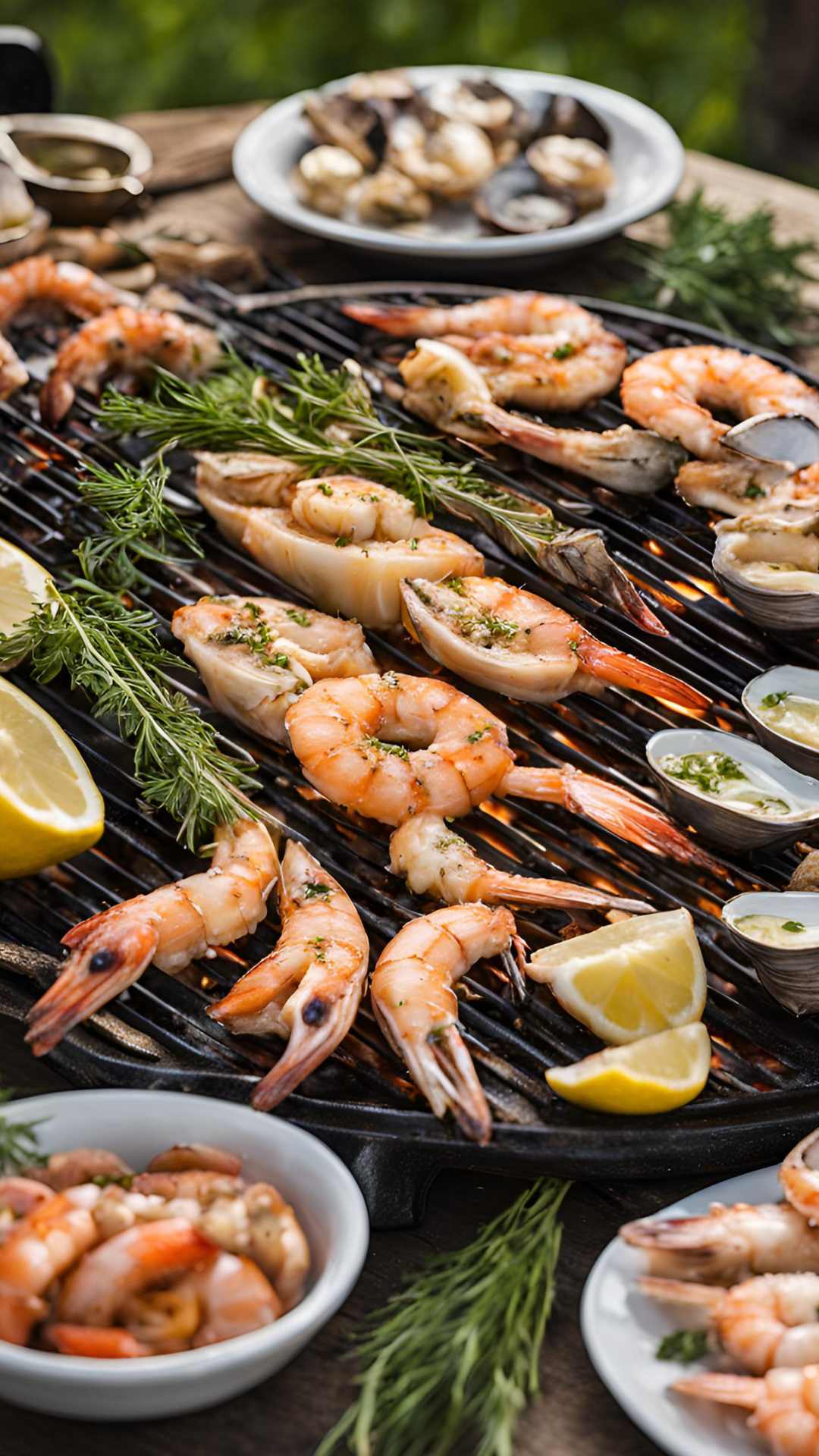
With a variety of options such as scallops, lobster tails, and firm fish fillets, the possibilities for flavor combinations are endless. The grilling experience not only excites the palate but also fosters lasting memories shared around the table.
Best Types of Seafood for Grilling
When considering grilling, it is important to recognize that not all seafood is created equal. Selecting the right types can significantly enhance your culinary creations.
Fish such as Mahi Mahi, salmon, tuna, and swordfish are excellent choices for grilling due to their firm textures and ability to withstand the heat of the grill. Additionally, prawns and shellfish provide unique flavors that, when grilled, produce a delightful smoky aroma and appealing grill marks that can elevate any dish.
By understanding the characteristics of various seafood, you will be able to choose the best options, ensuring a flavorful and enjoyable grilling experience.
Fish and Shellfish Choices
Choosing the right fish and shellfish for grilling is crucial in creating a delicious and satisfying meal. Popular options include firm fish such as Mahi Mahi, salmon, and tuna, all of which hold up well to grilling and absorb flavors beautifully. Prawns and other shellfish provide a sweet and succulent bite that complements the smoky tones from the grill.
Plus these favorites, consider snapper and swordfish, both of which have meaty textures that are ideal for high-heat cooking. The mild, buttery flavor of halibut shines when grilled, especially when paired with zesty marinades.
For shellfish enthusiasts, scallops offer a delightful caramelization on the grill while maintaining their tender, juicy interior. Clams can also be a delightful addition when prepared in a grill basket.
Each of these selections not only presents a unique flavor profile but also contributes a satisfying crunch or flakiness, enhancing the overall experience of a summer cookout.
Preparation Steps for Grilling Seafood
Preparation is crucial for grilling seafood, as it ensures that your final dish is bursting with flavor and cooked to perfection. This process begins with selecting fresh seafood, which involves checking for quality indicators such as clear eyes, firm flesh, and a clean smell.
Once you have made your selection, seasoning becomes essential—whether through a simple drizzle of olive oil or a more complex marinade involving herbs and spices, each step contributes to the overall taste.
Timing is also critical; understanding how long to grill different types of seafood can mean the difference between a delectable meal and a dry, overcooked disaster.
Choosing Fresh Seafood
Selecting fresh seafood is a foundational step in preparing a delicious grilled dish, as the quality of the fish directly impacts the flavor and texture. When shopping at your local fishmonger or grocery store, look for indicators such as vibrant skin, a fresh ocean scent, and firm flesh.
Pay close attention to the eyes of the fish; they should be clear and bulging, indicating freshness, rather than dull or sunken, which suggests age. The gills should be bright red or pink, reflecting vitality, while any discoloration or sliminess could indicate spoilage.
When making your selection, it is crucial to prioritize sustainable sources. This not only helps maintain fish populations but also ensures that the seafood available is of the highest quality. By supporting eco-friendly options and recognizing the importance of traceability, you can enjoy your grilled seafood dishes with a clear conscience, knowing you are contributing to healthier ocean ecosystems.
Marinating and Seasoning
Marinating and seasoning are critical steps in preparing seafood for grilling, as they infuse the fish with flavors that enhance the overall dish. A good marinade typically includes olive oil, fresh herbs, and spices, allowing the seafood to absorb the flavors while remaining tender during the grilling process. Achieving the right balance of seasoning can elevate grilled fish, stimulating the taste buds and creating a memorable meal for any occasion.
For example, consider using a zesty citrus marinade made with lemon juice, garlic, and a hint of soy sauce to brighten the natural flavors of shrimp or salmon. Incorporating fresh herbs like dill or cilantro not only adds fragrance but also beautifully complements the delicate taste of seafood. Additionally, spices such as paprika or cayenne can introduce a delightful kick, providing a contrast to the pleasing texture of grilled scallops or tilapia.
By taking the time to marinate and season seafood properly, you can transform a simple meal into an extraordinary culinary experience, making it ideal for outdoor gatherings or family dinners.
Grilling Techniques for Perfect Seafood
Mastering grilling techniques is essential for achieving perfectly cooked seafood. This process demands careful attention to temperature, timing, and the appropriate methods.
Properly preheating your grill, whether it’s a gas or charcoal model, establishes the ideal cooking environment, enabling you to achieve that desirable smoky flavor and attractive grill marks. Each type of seafood may require specific cooking times and techniques to ensure it remains tender and juicy.
Understanding these nuances can elevate your grilling experience from good to truly exceptional.
Preheating the Grill
Preheating your grill is an essential step in the grilling process, ensuring that your seafood cooks evenly while retaining its moisture. Whether you are using a gas grill or a charcoal grill, allowing the grill to reach medium-high heat creates an ideal environment for achieving those desirable grill marks and smoky flavors. Taking the time to preheat not only enhances the flavors but also minimizes the risk of sticking, contributing to a successful grilling experience.
For gas grills, turn on the burners and set them to high, allowing the grill to heat for about 10 to 15 minutes with the lid closed. This method helps to trap heat and establish a steady cooking temperature. Conversely, for charcoal grill enthusiasts, it is necessary to light the charcoal and wait until the briquettes are ashed over, which typically takes around 20 to 30 minutes. This step aids in flavor development and ensures safety, as cooking on an inadequately heated grill can result in unevenly cooked food.
By prioritizing preheating, you can enjoy a more satisfying meal with beautifully cooked dishes that showcase your culinary skills.
Cooking Times and Checking Doneness
Understanding cooking times and checking for doneness are essential skills when grilling seafood, as different types require varying levels of heat and duration to achieve optimal results. Fish should typically be cooked to an internal temperature of 145°F, while shrimp should appear opaque and pink when fully cooked. By learning to recognize these signs, you will not only serve perfectly cooked seafood but also avoid the disappointment that comes with overcooked meals.
Shellfish, such as scallops and lobster, demand careful attention, as they can quickly transition from beautifully tender to rubbery if overcooked. For example, scallops usually require about 2-3 minutes per side on high heat, while lobster needs approximately 1-1.5 minutes per ounce when grilled.
A good practice is to use a meat thermometer or to rely on visual cues; seafood should remain moist and translucent, rather than dry. Timing is crucial, so keeping a close eye and adjusting based on the thickness of the fillets or type of shellfish will help ensure delightful results.
Post-Grilling Tips
After the grilling process, there are several important post-grilling tips to follow that can enhance your enjoyment of seafood dishes.
Allowing grilled seafood to rest for a few minutes before serving is essential, as it helps retain moisture and intensifies the flavors. Consider pairing your grilled fish or shrimp with complementary sauces or sides to create a balanced meal that highlights the smoky tones achieved during grilling.
Thoughtful serving suggestions can elevate the overall dining experience and showcase your culinary skills.
Letting Seafood Rest and Serving Suggestions
Allowing seafood to rest after grilling is a crucial yet often overlooked step that can significantly enhance the flavors and texture of the dish. Resting enables the juices to redistribute throughout the fish or shrimp, resulting in a moist and flavorful bite.
This straightforward practice not only elevates the dish but also makes it more appealing to the palate. After resting, consider serving the seafood drizzled with a zesty lemon-herb vinaigrette, which can brighten the overall taste.
For an added crunch, topping it with toasted nuts or seeds can provide a delightful contrast. Pairing the seafood with seasonal grilled vegetables, such as asparagus or bell peppers, adds color to the plate and enhances the overall dining experience.
A side of refreshing avocado salsa can further amplify the flavors, creating a harmonious balance that your guests will appreciate.
Frequently Asked Questions
1. What are the best types of seafood to grill?
Fatty fish like salmon, tuna, and sardines are best for grilling because they can withstand high heat without drying out. Shrimp, scallops, and lobster are also great options.
2. How should I prepare my seafood before grilling?
Make sure to pat your seafood dry before grilling to ensure a crispy exterior. You can also marinate or season it beforehand to add extra flavor.
3. How can I prevent my seafood from sticking to the grill?
Brush the grill grates with oil before grilling, or place your seafood on top of a sheet of aluminum foil to prevent sticking. You can also use a non-stick spray or a marinade with oil to create a barrier between the seafood and the grill.
4. What is the best way to tell when seafood is done cooking?
It’s important to not overcook seafood, as it can become tough and rubbery. Use a meat thermometer to ensure the internal temperature reaches at least 145°F for fish and 165°F for shrimp, scallops, and lobster. Another way to tell if seafood is done is by its color – it should be opaque and flake easily with a fork.
5. How long should seafood be grilled for?
The cooking time will vary depending on the type and size of seafood. As a general rule, most seafood only needs to be grilled for 3-4 minutes on each side to cook through. However, thicker cuts of fish or larger seafood may require a few extra minutes.
6. What are some common mistakes to avoid when grilling seafood?
One common mistake is to overcook seafood, as mentioned before. Another mistake is to not oil the grill grates or seafood itself, which can result in sticking. It’s also important to not overcrowd the grill and to keep a close eye on the seafood to prevent burning.


